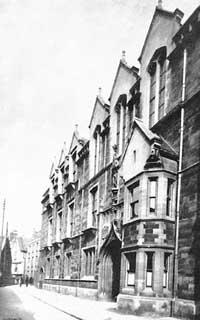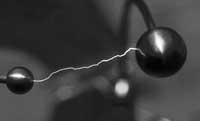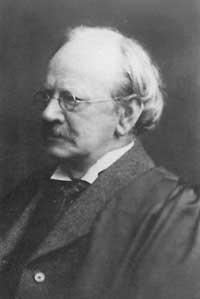Electron smaller than the atom
From the hand of x-rays, radioactivity, radiation of the dark body... At the end of the 20th century Physics received a huge boost and several experts came to think that almost everything was discovered. But historiographs see otherwise the situation of that time; the real revolution of physics that was to come in the coming years (from our point of view) and, therefore, the beginning of the new century has been situated in 1895. Two years later the first particle smaller than the atom was discovered: the electron.
Needs and needs

Matter is formed by atoms, that is, by basic components of indivisible matter. Indivisible? Scientists did not hesitate at this time: all things are made up of atoms that cannot be divided.
This idea was not a simple reflection, but many scientists, after a long research, managed to divide the substances into compounds and elements. In addition, the elements were sorted according to their chemical properties. The Russian Dimitri Mendeleiev ‘finished’ this work and called the result the periodic table. Mendeleiev did not know each and every element and recognized that there were incomplete holes, perhaps his greatest contribution.
The periodic table is very useful because it is a classification based on chemical properties. But why are there elements similar to others? What is the secret? The answer was found by physicists.
Color effects
Experiments on electricity were common in physics of that century. Electricity, both static and current, XVIII. In the nineteenth century it began to be understood; the famous experiment of the American Benjamin Franklin (kite and key) served to explain that the rays are electrical effects. Electricity attracted the attention of physicists. A hundred years later, the experiments were much more sophisticated.
The Briton Michael Faraday wanted to study whether or not electricity is transmitted to the vacuum, but he did not get the vacuum; a high-powered pump was missing. But in 1855, the German glass manufacturer Heinrich Geissler built a powerful mercury pump that designed a special tube to pass electricity into the vacuum, the Geissler tube. The result was spectacular: in the opposite part of the negative electrode there was a green luminosity.

The experiment became famous and competition between German and British physicists was resurrected. In both villages an explanation was given to the phenomenon. In Germany, Eugen Goldstein proposed that this brightness was an electromagnetic wave, invented by the term cathodic ray itself. In England, physicist William Crookes, a former student of Faraday, improved the Geissler bomb and formed the Crookes tube and repeated the experiment. According to Crookes, the clarity was produced by particles (and not waves). Wave or particle? This question followed until World War II with no adequate answer.
Other steps
The Germans Johann Wilhelm Hittorf and Julius Plücker invented experiments to study how cathodic rays are transmitted. The former was able to demonstrate that it is emitted correctly, since putting a solid in the pathway interrupts the radiation. The second diverted the rays by magnetic fields. This effect has been used for the construction of television screens.

The smallest charged particles known until then were ions, atoms in short. Some physicists proposed that electricity is transported by particles, but if that was true, these particles could not be atoms. The German Herman Ludwig von Helmholtz showed that the charge should be divided into small units within the atom.
Finally, the electron
Irish George Johnstone Stoney calculated the load of these particles and obtained a fairly accurate result. The magnets easily divert the cathodic rays, which presented two explanations: they were particles of great load or were much lighter than the atom. The mass was calculated and proved to be 1,873 times lighter than the hydrogen atom. The characteristics of the cathodic rays were already known, to which Stoney gave them the name of electrons, but they did not know what they were.
Finally, the interpretation of cathodic rays was performed by the British Joseph John Thompson. Thompson thought that cathodic rays are "corpuscles." In 1895, the Frenchman Jean-Baptiste Perrin discovered that his burden was negative. Thompson learned two important things in experiments: that electric fields also divert rays and move much more slowly than light.
Scientists did not accept this conclusion from the beginning, but the following experiments fit Thompson's idea: the electron is a component of the atom that gives it a negative charge. On April 30, 1897, a particle smaller than the atom was first reported.





